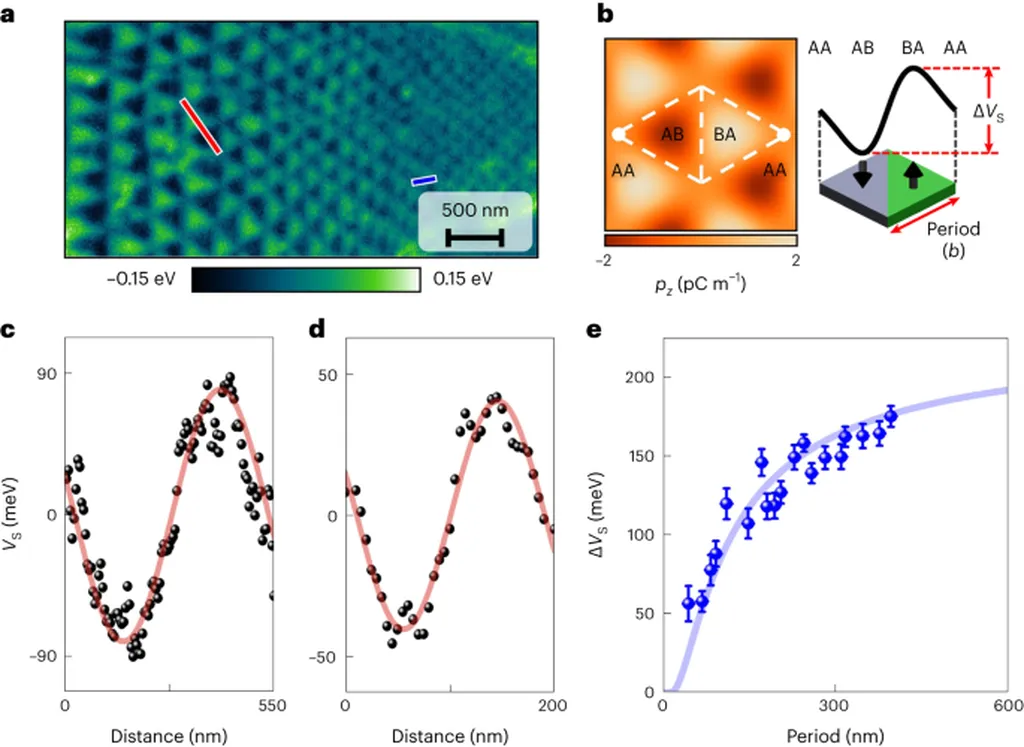Researchers from the University of Texas at Austin, including Md Tusher Ahmed, Chenhaoyue Wang, Amartya S. Banerjee, and Nikhil Chandra Admal, have published a study in the journal Nature Communications that explores the potential of bilayer hexagonal boron nitride (hBN) for advanced memory applications. Their work focuses on understanding how ferroelectricity, a property that could be crucial for next-generation non-volatile memory devices, behaves under large deformations in this material.
Hexagonal boron nitride is a two-dimensional material with a similar structure to graphene, but with different chemical properties. When two layers of hBN are stacked and twisted relative to each other, they can exhibit ferroelectricity, which means they can have a spontaneous electric polarization that can be switched by an external electric field. This property is highly desirable for non-volatile memory applications, as it could allow for data storage without the need for continuous power.
Previous studies have primarily focused on small deformations in bilayer hBN, leaving a gap in understanding how ferroelectricity behaves under larger deformations. The researchers addressed this by using a combination of atomistic simulations and a newly developed continuum framework called the bicrystallography-informed frame-invariant multiscale (BFIM) model. This model allows for predicting ferroelectricity in large-unit-cell heterostructures where atomistic simulations are too computationally expensive.
The study found that out-of-plane ferroelectricity can indeed persist under large deformations in bilayer hBN. For configurations near the AA stacking, the researchers observed that ferroelectricity is supported under both small twist and small strain. Interestingly, the mechanism for polarization switching differs between these two cases. In small-twist configurations, straight interface dislocations govern the switching, while in small-strain configurations, swirling dislocations play a crucial role.
For configurations near the Σ7 stacking, where reliable interatomic potentials are lacking, the BFIM model proved to be a valuable tool. It accurately captured out-of-plane ferroelectricity and revealed that interface dislocations in these large heterodeformed bilayer configurations exhibit smaller Burgers vectors compared to those in small-twist and small-strain bilayer hBN.
The practical applications of this research for the energy sector, particularly in advanced memory technologies, are significant. Non-volatile memory devices that utilize ferroelectric materials could offer more efficient and sustainable data storage solutions, reducing the energy consumption associated with traditional memory technologies. As the demand for data storage continues to grow, the development of such technologies could play a crucial role in creating a more energy-efficient digital infrastructure.
The research was published in the journal Nature Communications, providing a robust foundation for further exploration of ferroelectricity in bilayer hBN and its potential applications in the energy sector.
This article is based on research available at arXiv.

